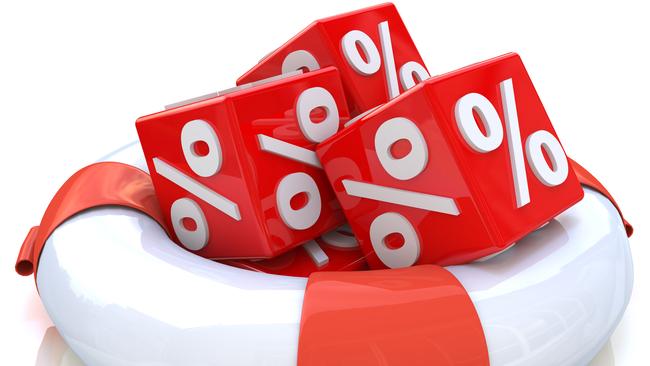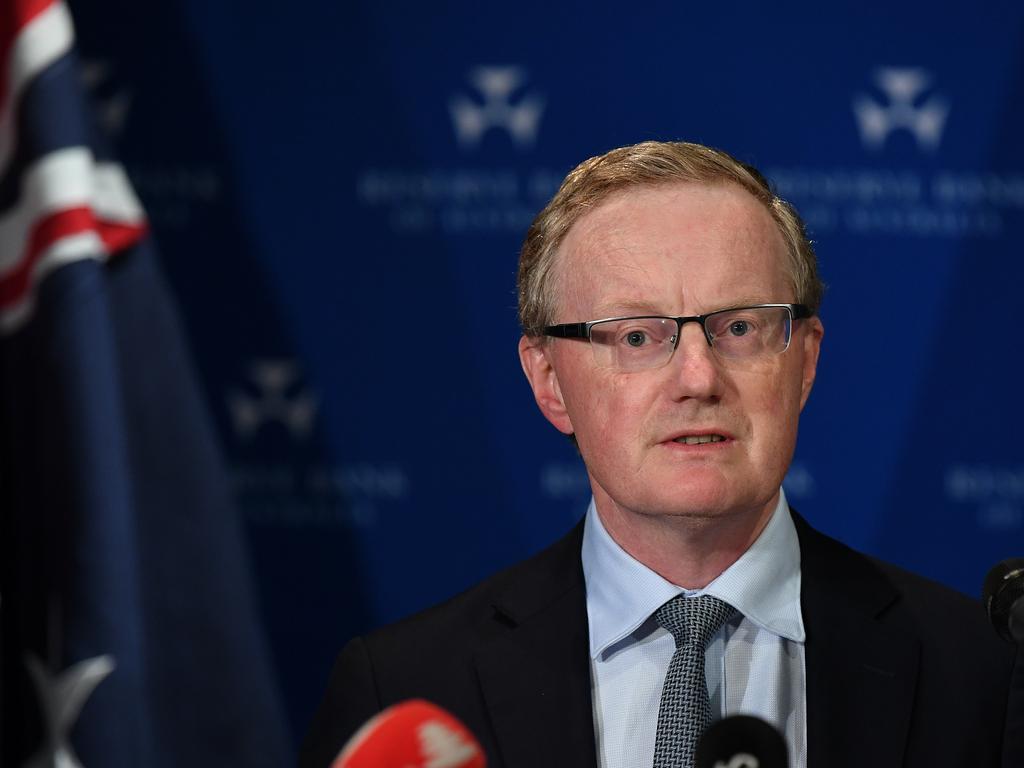Coronavirus crisis: Finally some relief for savers
The rapid deterioration in markets could lift cash rates just as fast — in fact the first moves have been made.

Our own RBA cut to 0.25 per cent this week but as investors we know that central banks can only determine official rates.
The course of commercial rates is a different story altogether. The emphasis of monetary policy is on lending rates; the course of deposit rates may not be the same.
On Thursday when the RBA made its milestone move, Commonwealth Bank raised its cash deposit. The nation’s biggest bank lifted its one-year term deposit to 1.7 per cent — a full 0.6 per cent addition which offers a rate in relative terms miles ahead of the rest of the market.
This is more than a marketing move — this is bank strategy writ large. We know there is going to be a surge in credit demand from stressed borrowers in the months ahead. Banks will want deposit funding to match this pressure. CBA is a step ahead.
Most banks are closer to 1.1 per cent. For investors, especially savers and older investors, it means the rest of the banking sector must follow CBA to stay competitive.
In fact Westpac jumped on Friday with a separate lift in cash rates and a special deal for older Australians only.
Westpac is offering a 12-month term deposit of 1.7 per cent with a cap of $500,000 per customer. For Australians aged 65 and over the rate will be 2 per cent for eight months (up to $500,000 per customer).
This is the big banks using their market power. Keep in mind cash deposit rates at platform providers such as Hub24 and NetWealth are at zero.
Suddenly cash is not just desirable as listed markets tank, it is being priced higher. This is a textbook response — it’s just that it normally takes a lot longer for the worm to turn like this.
With a pandemic we have no direct parallel, but previous routs — the GFC, the dot.com crash and even the ‘‘oil shock’’ of the 1970s — will offer some guide.
Goldman Sachs economist Andrew Boak explains that these ‘’shocks’’ of recent history were deep but extended. He points out that the 1980s recession took seven quarters for growth to move from peak to trough, in the 1990s it took three quarters: ‘‘Fast forward to today, we expect measures taken to contain the virus will result in the contraction in growth being compressed almost entirely into a single quarter.’’
Here’s the essence of Goldman Sachs’ updated forecast for Australia released on Friday: GDP will shrink by 6 per cent for the calendar year, the sharpest annual GDP contraction since the Great Depression, with a base case that growth will start to recover in the last three months of this calendar year, while unemployment is forecast to peak at 8.5 per cent.
Against that backdrop, apart from better cash rates, the next phase will separate survivors on the sharemarket from potential failures — think of Qantas against Virgin.
Committed market investors will cling to the most stable and liquid stocks. The major banks, Coles and Woolworths, Telstra are all now re-rated. Stocks that are losing money or stretched in any way are highly vulnerable. That’s why Afterpay fell so fast one day this week that it had to have a temporary halt known as an extreme trade range suspension, which is what you get when your stock falls more than 30 per cent in a single session.
Companies with cash and competent management will reformulate in a way that they can thrive when the recovery arrives — there is a reason why Warren Buffett is the biggest shareholder in Apple.
From here the next public signs of stress to monitor will be in the debt markets, particularly corporate credit markets where yields (a proxy for rates) are rising. This might sound exotic, but in an era where Australian investors are now actively investing in both overseas markets and bond funds the impact will hit much sooner than might be expected.
Very large bond funds listed on the ASX, having held up in the early days of this crisis, are now dropping. In theory bonds should rise as rates drop further but in a market where everyone is looking for cash, everything that can be sold down will be sold down.
For investment funds the story will be similar. We cannot rule out badly run below-par funds ‘‘freezing’’ their accounts. At the same time the value managers that have been criticised for ‘‘missing out’’ in recent months by holding large portions of cash will have their day in the sun.
Every crash is different and this one is marked by two outstanding features: volatility and intensified connection between our exchange and Wall Street.
This week we witnessed the market itself working to try to police the sell-off. Wall Street had several intraday stops, in Australia the regulators put limits on stockbroker trading volumes and one of the biggest super funds — Unisuper — moved to cut off financing to short traders.
From a macro perspective the next phase will involve deeper levels of government intervention than investors have seen previously — the RBA’s bond-buying program is the most obvious evidence to date.
Some investors are going back into the sharemarket, bargain hunting at these levels, which are more than 30 per cent down from the top. But they’re often company founder investing in their own companies or company directors honour-bound to have stock in companies finally putting their hands in their pockets to have some skin in the game.
Stock buyers at this level could be greatly rewarded. They are buying in defiance of advisers who say “not yet, wait for the turn” — but nobody rings a bell at the turn.
As it stands total policy stimulus in the financial system during this crisis to date is only about a fifth as large as what was delivered in the GFC.
In the months ahead government assistance will broaden from instant moves such as cash grants to structural moves that may even include the nationalisation of stricken — but crucial — companies. For investors it means assumptions are changing daily and opportunities will continue to open. Beneath this torrent of government intervention we are actually seeing the very fabric of markets under strain — but that’s a discussion for another day.








We are moving now with alarming speed to the next phase of this market crisis. As investors we have been working under the belief that cash rates are going down and that they will stay down because central banks are doing everything to hold official rates low.